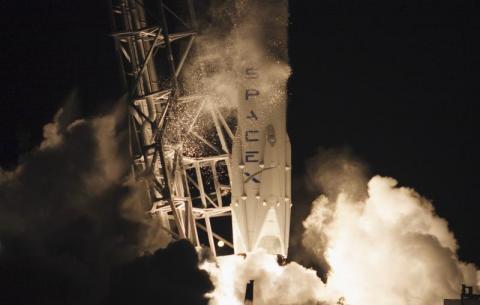The Democratization of Space
FREE-FOR-ALL
Computing gets much of the credit for lowering the barriers to entry to space. The modern smartphone is the product of three-plus decades of advances in circuit design and fabrication techniques, and today’s processors pack 1,000 times as many transistors as their predecessors did 20 years ago. The iPhone 6 has as much computational power as a supercomputer from the 1990s did. Smaller also means more energy efficient: a typical cell phone will draw just 25 cents’ worth of electricity in a year, compared with the $36 worth a typical desktop computer does. Small, powerful, and energy-efficient hardware is perfectly suited for satellites, which have a finite amount of electricity (from solar panels) and volume. And thanks to new software-development tools and customizable hardware, anyone with even a modest programming ability can assemble a highly capable computer that could fit into a satellite.
Changes in manufacturing are also making space missions cheaper. The space community’s needs have always been at odds with traditional fabrication techniques. Satellite payloads typically require parts that are durable, extremely delicate, and specialized. And because the companies or governments that buy them rarely build more than two or three of any particular type of satellite, they usually need only a few copies of each part. As a result, space missions have never benefited from the economies of scale offered by assembly lines.
Enter additive manufacturing techniques such as 3-D printing and laser sintering. With a single $35,000 device, designers can quickly build things that, in the past, would have required all the trappings of a modern factory: custom molds, specialized robots, and conveyor belts. Additive manufacturing slashes the cost of producing a handful of parts by a factor of at least ten. Plus, no machine-tooling expertise is required.
Not only has it become much less expensive to construct a satellite; it is also becoming much cheaper to send it into space. Companies such as Orbital ATK and SpaceX are working to lower the costs of space launches, by modularizing their vehicles, modernizing their design and fabrication workflows, and vertically integrating their manufacturing processes. These companies are still primarily focused on traditional missions involving heavy payloads, such as launching military satellites and resupplying the International Space Station.
Alongside these giants, a group of more obscure start-ups is focusing on smaller satellites. At least a dozen companies are now developing small rockets designed to carry payloads of less than 1,000 pounds. In the past, these small payloads—made up of such things as science experiments or atmospheric sensors—had to wait for room on a larger, state-sponsored rocket, if they could get a ride at all. As technology has made small payloads more viable and prolific, new companies are looking to fill this niche by developing launch services that cost between $1 million and $10 million, in lieu of the $50 million to $250 million for traditional payloads.
These advancements—in computing, manufacturing, and launching—have made space more accessible than ever before, and entrepreneurs are entering the fray. One characteristic newcomer is Tyvak Nano-Satellite Systems, a small company that employs just two dozen engineers and is headquartered in a modest office park in Irvine, California. Its mission: to build satellites so inexpensive and easy to use that practically anyone can buy and launch them. The company has developed a modular system—essentially, an Erector set for satellites—that allows it to configure a satellite for a particular client’s needs, and at a very low cost. While the average satellite in orbit costs around $100 million to build, Tyvak’s start at $45,000. Their clients range from well-funded high school science clubs to NASA.
Dave Baiocchi and William Welser IV

